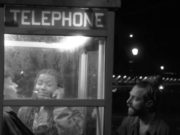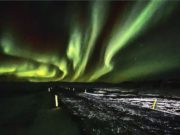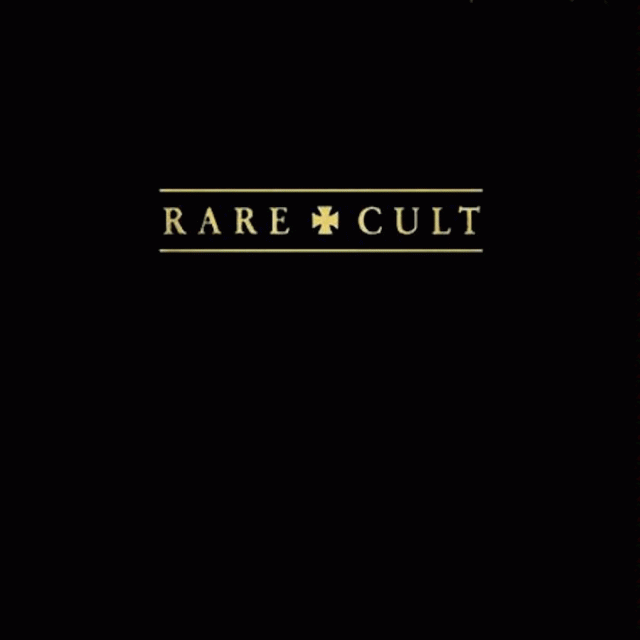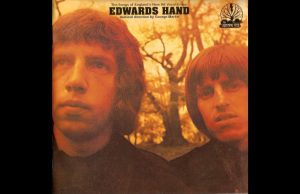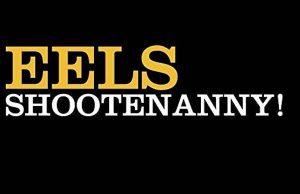Two decades ago, new albums and box sets from The Cult, The Guess Who, J Mascis, Chemical Brothers and others were spinning away in my portable CD player. Here’s what I had to say about them back then (with some minor editing):
 The Cult
The Cult
Rare Cult: 1984-1995
Nothing can ruin a music critic’s day like getting a six-CD box of unreleased Cult songs in the mail.
Don’t get me wrong: I’m all in favour of artists digging through the vaults. But come on, six CDs? From The Cult? Hell, they only put out six albums in the first place. Of those, only a few — Love, Electric and maybe, just maybe, Sonic Temple — are truly must-haves. And even on those albums, it’s not like Cher-haired singer Ian Astbury and punkabilly guitar hero Billy Duffy were continually amazing you with the bottomless well of their creativity (this is a fancy way of saying they wrote the same songs over and over again). Basically, I always thought of them as a decent (if unspectacular) AC/DC tribute band fronted by a Jim Morrison impersonator. Seven hours of unreleased material from these guys? That’s not a Cult compilation — that’s a cult indoctrination.
But damned if it’s not an effective one. Despite my initial resistance, after sitting through these 90 songs — 25 tracks more than they released on all their other albums combined — I came away with a newfound respect for The Cult. Or at least a newfound appreciation for their work ethic. Hey, anybody who records more than twice as much stuff as they release can’t be accused of sloth.
Of course, not all that effort pays off. The first disc of this chronological set, which captures their early years when they looked and sounded like a bunch of refugees from Spandau Ballet, is pretty much skippable for all but the most rabid fan. Ditto for a bunch of the later stuff, when their career (along with Astbury and Duffy’s partnership) was on the decline and they were making albums even they didn’t much care for. But on the middle four discs — the 50 or so tunes from their riff-heavy, arena-rock heyday — I found plenty to keep me from hitting he skip button. Such as:
• The 1985 track Go Go Guru marks the turning point between their gothy, New Romantic roots and their guitar-rock glory. After spending the first disc essentially ripping off The Edge’s fussy scratch and ringing sound, Duffy suddenly slaps down a spiky Angus Young riff for Astbury to wail over. All that’s missing is somebody saying, ‘Eureka!’
• Several alternate mixes and leftovers from Electric, their breakthrough album produced by Rick Rubin. It was Rubin who convinced The Cult to “stop playing this pussy English s— and make some rock,” as Duffy recalls in the 82-page full-colour booklet in the box. As he tells it, they had an album called Peace completed and asked Rubin to remix a track. He agreed, if they would record one new song with him. Well, one turned into two, and eventually into Electric.
• The Peace album, which they scrapped after meeting Rubin, is also included here in its entirety. It makes for an interesting contrast with the album that superseded it. About half the songs are the same, but without the stripped-down power that Rubin brought to the table.
• A not-bad cover of Faith Healer, a fairly obscure gem by The Sensational Alex Harvey Band. Anybody who covers Harvey is OK in my book.
• Finally, there are a couple of dozen demos and a few relaxed, in-studio jams. For me, these unvarnished, spontaneous cuts were the coolest stuff in the box for two reasons: 1) They make you realize Duffy is a solid axeman, not the ham-fisted hack you might presume. Hearing him play without all the studio gloss and overdubs, it’s obvious from his blistering, note-perfect leads and rock-solid chords he was the glue that held the band together; 2) These cuts also make you realize that at their core — once you get past Astbury’s silly leather hats and hair extensions and Indian spirituality — these boys could really rock out when they wanted to. Too bad they didn’t want to more often.
At the end of the day, Rare Cult clearly isn’t for the casual fan. That’s likely why there’s Best of Rare Cult, a single disc with 11 cuts from the box and a few more exclusive tracks. But it doesn’t have those way-cool demos. The only way to get those is to shell out for the full set — or wait for an upcoming demos collection due next year. Honestly, that’s a Cult box set I’d like to hear — as long as it’s not, you know, 14 CDs or something.
https://youtu.be/ix3d4h5ZWBA
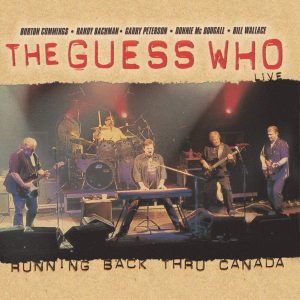 The Guess Who
The Guess Who
Running Back Thru Canada
In the beginning, there was The Pan Am Games Concert. And it was good. So good, in fact, that it prompted The Reunion. Which began with The Reunion Rehearsals, capped by The Secret Reunion Community Club Show and The Expected Reunion Spat, followed by The Drafting of The Second-String Reunion All-Star Replacements. They set out on The Cross-Canada Reunion Tour, which of course included The Hometown Reunion Concert. More recently, we’ve seen The Grey Cup Half-Time Reunion Appearance, The Surprise Reunion Bar Gig at the El Mocambo and — deep breath, now — The TV Special of The Cross-Canada Reunion Tour, Featuring Footage From the Hometown Reunion Concert.
Hey, didja hear The Guess Who got back together? More to the point, if you didn’t, how long have you been dead? Let’s face it, for the past 18 months, this has been The Guess Who’s world; we all just live in it. We’ve read the interviews, we’ve seen the shows, we’ve dug the songs, we’ve relived the past, we took home the souvenirs. By now, we all should have had our fill. And speaking personally, I thought I had. Then I heard Running Back Thru Canada, aka The Two-CD Live Album of The Cross-Canada Reunion Tour, Featuring Songs From the Hometown Reunion Concert. All of a sudden, I wasn’t tired of The Guess Who reunion anymore; I was sitting there with a stupid smile on my face, nodding my head to These Eyes, playing air guitar to American Woman and marvelling yet again at how unbelievably good these guys still sound after all these years.
Yeah, I know that’s old news. Everybody who saw them live this summer said the same thing. But Running Back Thru Canada really hammers that point home. No, it’s not the same as being there. But in some ways, it just might be a little better than the real thing. On this simply produced 22-song set, there’s nothing to distract you from the songs and the sound — no beer vendor, no light show, no lummox standing in front of you screaming endlessly for Shakin’ All Over. And once you sit and really listen, just listen, to these guys, it’s hard to believe this disc was recorded this summer and not 25 years ago.
Burton Cummings’ voice still has the power and range of kids half his age, not to mention a whole lot more soul and seasoning. Randy Bachman’s guitar playing continues to improve as he gets older. Drummer Garry Peterson is still as solid as the Great Wall of China. Even guitarist Donnie McDougall and bassist Bill Wallace, latter-day members called in to replace original bassist Jim Kale, hold their own admirably.
The album contains all the high points of the live show — the note-perfect renditions of hits like Undun, These Eyes, Bus Rider, No Sugar Tonight and Share the Land; the jazzy “coffeehouse” mini-set with Lookin’ Out for #1 and Sour Suite; and the playful, 13-minute version of American Woman with its opening bluesy jam. You can nitpick about a few of the other selections — why they included the little-heard, hokey guitar ballad Talisman and the comparatively goofy Clap for the Wolfman but left off Road Food and Star Baby is beyond me. But those are really minor quibbles on what is otherwise a near-flawless album — especially from a band that took about 20 years off between tours. Now, I’m looking forward to hearing The Studio Reunion Album of All-New Songs.
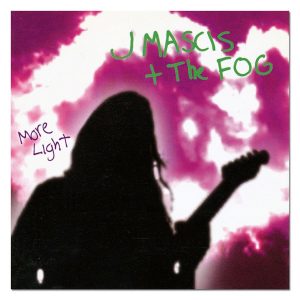 J Mascis + the Fog
J Mascis + the Fog
More Light
If grunge is dead, nobody told J Mascis. Not that he’d care much anyway. The uberslacker singer-guitarist of noise-rock gods Dinosaur Jr. certainly didn’t try to fit in during the hair-metal ’80s or the alt-rock ’90s, when his lo-fi cathedrals of ringing feedback and his world-weary croak stuck out like two sore thumbs. Well, those trends are long gone, but J is still around. And still spinning his magnificent guitar-torture epics in exactly the same way — by cranking the amp to 11, stomping on every distortion box he can get his feet on, and making a most glorious noise. The only difference between More Light and his last half-dozen albums is the quality of these songs. Recorded over the better part of a year with help from Guided by Voices’ Robert Pollard and My Bloody Valentine’s Kevin Shields, these 11 tunes are Mascis’s best tracks since DJ’s near-perfect ’91 album Green Mind. Same Day, I’m Not Fine and the raging cyclone of the title cut are basement metal-shop masterworks, with squalls of axe torture, shambling drum-roll rhythms and insidiously addictive choruses arc welded into a two-headed likeness of Neil Young and Kurt Cobain. Nice to have you back, J.
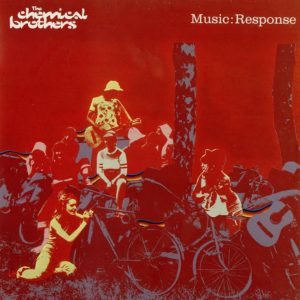 Chemical Brothers
Chemical Brothers
Music: Response
“Music should trigger some kind of response,” explains the sampled voice on the leadoff track of Chemical Brothers’ new EP. In this case, that response would definitely be a delayed reaction. And not just because that titular cut is straight offa the Chems’ Surrender album. Along with that, you also get two remixes of the song that really don’t add much, along with a couple of leftover B-sides that can only be described as pretty standard Big Beat, down to the thumping bass drums and buzzy, swirling vibes. But it isn’t until 35 minutes into this sucker that the beef finally appears in the form of two dynamic, kinetic live versions of Out of Control and Got Glint?, recorded at Glastonbury this summer. They’ll get your head nodding and your butt moving. That’s the response the Brothers’ music should trigger.
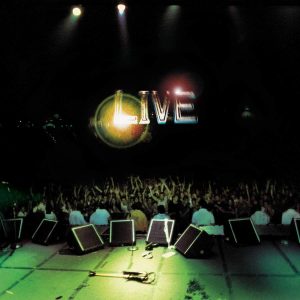 Alice in Chains
Alice in Chains
Live
Are these guys even a band anymore? It’s been five years since they recorded an album, four since they toured and two since guitarist Jerry Cantrell apparently gave up on reclusive singer Layne Staley and issued a solo album. Understandably, their record label has been trying to keep the home fires burning alive by issuing compilations: an Unplugged disc, the Music Bank box, the Nothing Safe best-of, and now, finally, this predictable electric live album. Not that Live is without merit. Assembled from four concerts between 1990 and ’96, these 14 tracks showcase the band at maximum strength, with Staley’s booming, Jim Morrisonian baritone and Cantrell’s gnarly, snarly guitarwork intertwining on darkly menacing grunge-metal pounders such as Angry Chair, Man in the Box, Rooster, Would? and Dirt. Still, for all but the truly rabid fan, Live just serves as yet another reminder that these guys are long overdue to put up or give up.
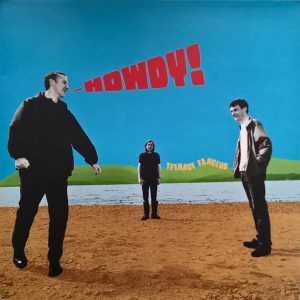 Teenage Fanclub
Teenage Fanclub
Howdy!
In 1991, Spin magazine picked Teenage Fanclub’s second record Bandwagonesque as Album of the Year — over Nirvana’s Nevermind. Oops. The mag is still trying to live that one down. Meanwhile, this Glasgow power-pop quartet is still trying to live up to the shining, briefly glimpsed promise of those early ’90s glory days. Howdy!, their sixth studio effort, once again finds them falling short of the mark. Like their ’97 release Songs From Northern Britain, Howdy! merges their long-standing obsession with the brilliantly bittersweet pop of Big Star with the jangly 12-string folk-rock of The Byrds and Neil Young. In other words, there’s heaps of harmony and heartfelt emotion. Too bad there just aren’t enough hooks to bind all the swelling organs and drifting melancholy into memorable tunes. In the end, there’s too much pop and not enough power here. If they want to improve on Howdy!, Teenage Fanclub should try getting rowdy.
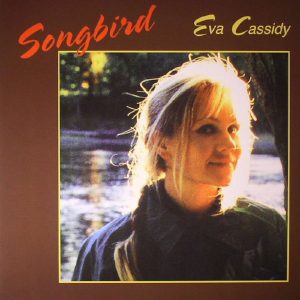 Eva Cassidy
Eva Cassidy
Songbird
In a perfect world, this impressive album from supernaturally talented Washington, D.C., club singer Eva Cassidy would be the sort of breakthrough that heralds the start of a brilliant career. In case you hadn’t noticed, it’s not a perfect world. In fact, sometimes it’s a lousy one. There’ll be no acceptance speeches or world-tour dates for Cassidy; she died of cancer in 1998, four months after releasing her first solo CD. Since then, her family and some dedicated followers have been spreading the word about her tremendous talent and tragically unfulfilled potential. One listen to Songbird — a compilation of various live and studio tracks — is all it takes to join the cult. Cassidy possessed one of the most stunning natural voices you’ve heard — sorta bluesy like Bonnie Raitt, but with the clarity and purity of Judy Collins and the ability to conjure up jaw-dropping Whitney-style pyrotechnics with the barest effort. Ultimately, though, Cassidy’s sound was hers and hers alone, equally adaptable to pop (Sting’s Fields of Gold), jazz (Autumn Leaves), soul (Curtis Mayfield’s People Get Ready), show tunes (Over the Rainbow) or even folk (Pete Seeger’s Oh, Had I A Golden Thread). Cassidy may be gone, but Songbird ensures she’ll not be forgotten.
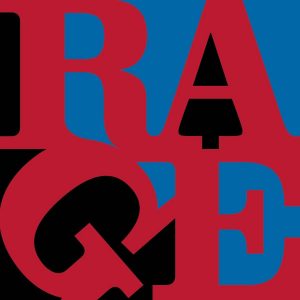 Rage Against the Machine
Rage Against the Machine
Renegades
Originally, as the story goes, these L.A. rap-metal trailblazers planned to put out a live CD, and went in the studio with Rick Rubin to cover a few songs as bonus tracks. Then they dug them so much they scrapped the live disc for this all-covers CD. Well, one suspects the October defection of singer Zack de la Rocha might also have been a factor. Either way, Renegades sends the Ragers off with a bang instead of a whimper. As sincere and explosive as a love-letter bomb, these 12 tunes incorporate all the band’s touchstones — hip-hop (Cypress Hill’s How I Could Just Kill a Man, Eric B and Rakim’s Microphone Fiend, etc.), punk (Minor Threat’s In My Eyes), metal (The MC5’s Kick Out the Jams, The Stooges’ Down on the Street), and blue-collar idealism (Bruce Springsteen’s Ghost of Tom Joad, Bob Dylan’s Maggie’s Farm). Nearly all the tracks are rendered in Rage’s familiar tones — the post-punk guitar heroics, the massively funky backbeats, the blistering righteousness. The best, however, is their take on a Rolling Stones classic: Somehow, Street Fightin’ Man sounds way more believable coming from Zack than it ever did from Mick. If this is Rage’s final bow, they can go out with their heads high.
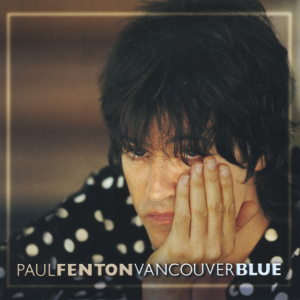 Paul Fenton
Paul Fenton
Vancouver Blue
From the title, you might take Paul Fenton for some sensitive B.C. sop with an acoustic guitar and a folkie bent. Not even close, chump. Fenton’s from Ottawa, his guitar is electric and he’s a dark-voiced, barn-burning blues-rocker in the mold of Johnny Winter and T-Bone Walker. In fact, on this EP, his third release, Fenton even pays tribute to the Texas tornado on the smouldering T-Bone Walker Blues. But don’t get the idea that Fenton is just another one-dimensional,12-bar belter, either. On this six-tune set produced by Greg Godovitz, Fenton also shows his way with country boogie (with a cover of Hank’s Mind Your Own Business) and jangly roots-pop (Girl Next Door).
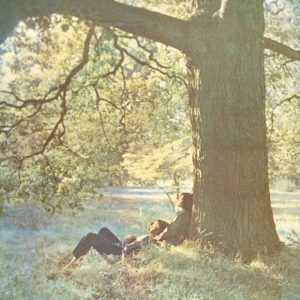
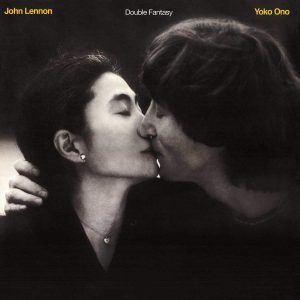 John Lennon
John Lennon
Plastic Ono Band
Double Fantasy
It was 20 years ago today … and if you really need an excuse to reacquaint yourself with the soul-baring honesty and peerless artistry of John Lennon, this sad anniversary of his pointless murder is as good as any. Two recent reissues provide a pair of interesting entry points. For a look at the early Lennon, there’s Plastic Ono Band, his first true solo album from 1970. For a glimpse of his final days, there’s Double Fantasy, issued two weeks before his death. Both of them have been newly remixed and remastered under his widow Yoko Ono’s supervision. That may or may not be a good thing in your book. What is undeniably good, however, are the extras. POB comes with two bonus tracks: Power to the People (a slice of Sly Stone funk) and Do the Oz (a spaced-out skronker first heard on the Lennon Anthology box). Double Fantasy includes the home-recorded (and oft-bootlegged) piano ballad Help Me to Help Myself, along with Yoko’s Walking on Thin Ice (one of the last songs he worked on) and a snippet of conversation. Plenty of people will be talking about Lennon the legend today. I’d prefer to remember the man and musician. These CDs are a fine start.
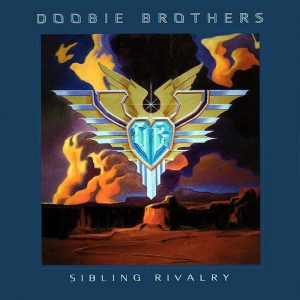 The Doobie Brothers
The Doobie Brothers
Sibling Rivalry
You never really know who’s gonna show at a Doobie Brothers reunion — these guys had so many members over the years that if they all hit the road, they’d need a double-decker tour bus. Still, as possible lineups go, this one has potential: original singer-guitarists Tom Johnston and Pat Simmons, along with multi-instrumentalist John McFee and veteran drummers Michael Hossack and Keith Knudsen. No Michael McDonald, no Cornelius Bumpus; just the rockin’ old guard. So naturally, Sibling Rivalry hews closer to the rootsy tones of The Captain and Me and What Were Once Vices Are Now Habits as opposed to the slick FM soul of Takin’ It to the Streets. That’s a good thing. What isn’t quite so good is that the boys seem kinda stuck in a wimpy rut here. Only the Dire Straits-ish rock of 45th Floor interrupts an otherwise unremarkable list of breezy acoustic ballads and gospel-tinged folk-pop. It’s not that there’s any evidence of rivalry on this disc; trouble is, there’s no revelry either.
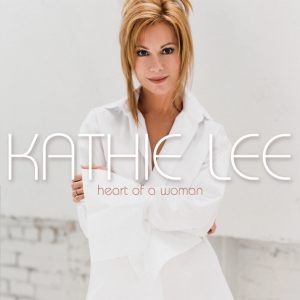 Kathie Lee
Kathie Lee
Heart of a Woman
Heart of a woman, personality of a publicity-addicted diva, voice of a second-rate Celine Dion impersonator, all the soul of an Amish lounge singer — and despite the attempts to tart up her image (with shudder-inducing cheesecake photos) and contemporize her sound (with injections of sterile blues-rock and, heaven help us all, deep-dish trip-hop), all the appeal of a date with Bea Arthur.







